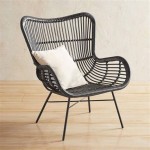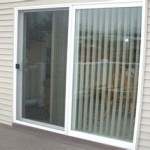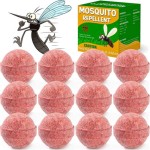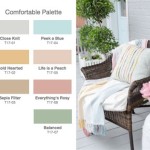Patio Swing Seat Replacement Parts: A Comprehensive Guide
Patio swings offer a relaxing and enjoyable outdoor seating option, providing a gentle swaying motion ideal for leisure and unwinding. Over time, however, components of the swing seat can deteriorate due to exposure to the elements, general wear and tear, or accidental damage. When damage occurs, replacing specific parts is often a more economical and sustainable solution than purchasing a completely new swing. This article provides a detailed overview of the various replacement parts available for patio swing seats, offering guidance on identification, selection, and basic maintenance.
The lifespan of a patio swing seat is influenced by factors such as the quality of materials used in its construction, the frequency of use, and the level of environmental exposure. UV radiation, moisture, and temperature fluctuations can all contribute to the degradation of materials like fabric, metal, and wood. Regular inspection and timely replacement of worn or damaged parts are essential for maintaining the safety and functionality of the swing.
Identifying Necessary Replacement Parts
The first step in addressing a damaged patio swing seat is to accurately identify the specific parts that require replacement. This involves a thorough inspection of the entire seat structure, noting areas of wear, corrosion, or breakage. Common components that may need replacement include the seat fabric, frame supports, chains or springs, hardware (such as bolts and nuts), and cushioning.
Seat Fabric: The fabric component of a patio swing seat experiences significant exposure to the elements. Fading, tearing, and mildew growth are common signs of wear. Replacement fabric is typically available in a range of materials, including weather-resistant options like Sunbrella, which is known for its durability and UV resistance. When selecting replacement fabric, it is crucial to consider factors such as colorfastness, water repellency, and ease of cleaning.
Frame Supports: The frame provides the structural integrity of the swing seat. Signs of damage to the frame include bending, cracking, or rusting. Depending on the material of the frame (e.g., steel, aluminum, or wood), different replacement parts and repair techniques may be required. For metal frames, welding or the replacement of individual tubes or crossbars may be necessary. Wooden frames may require the replacement of planks or supports that have rotted or splintered.
Chains and Springs: Chains and springs are critical for suspending the swing seat and providing its characteristic motion. Over time, chains can rust or weaken, while springs can lose their elasticity. Both can become a safety hazard if left unattended. Replacement chains should be of appropriate weight rating and material to ensure safe operation. Springs should be selected based on their length, diameter, and spring rate to provide the desired level of cushioning and bounce.
Hardware: Bolts, nuts, washers, and screws are essential for connecting various components of the swing seat. These small parts can corrode or become stripped, compromising the stability of the structure. Replacing corroded or damaged hardware with stainless steel alternatives is recommended to improve longevity and prevent future rusting. Ensure that the replacement hardware is of the correct size and thread type for compatibility.
Cushioning: The cushions on a patio swing seat contribute to comfort. Over time, cushions can flatten, tear, or become stained. Replacement cushions are available in various sizes, shapes, and materials. Selecting cushions with weather-resistant covers and high-density foam will ensure both comfort and durability. Consider the overall aesthetic of the patio when choosing replacement cushion colors and patterns.
Selecting Appropriate Replacement Parts
Once the damaged parts have been identified, the next step is to select appropriate replacements. When possible, refer to the manufacturer's specifications or the original parts list to ensure compatibility. If this information is unavailable, careful measurements and material considerations are necessary.
Material Compatibility: When replacing parts, consider the compatibility of materials. For instance, if the original frame is made of steel, replacing a rusted section with aluminum may lead to galvanic corrosion due to the difference in electrochemical potential between the two metals. Similarly, mixing different grades of stainless steel can also result in corrosion. Choose materials that are compatible with the existing structure to ensure long-term durability.
Load Capacity: The load capacity of replacement parts is a critical safety consideration, especially for chains, springs, and frame supports. Ensure that the replacement parts are rated to support the intended weight load. Exceeding the load capacity can lead to structural failure and potential injury. Consult manufacturer specifications or seek professional advice to determine the appropriate load capacity for your swing seat.
Weather Resistance: Patio swings are exposed to a variety of weather conditions, including sunlight, rain, and temperature fluctuations. When selecting replacement parts, prioritize materials that are weather-resistant. For example, using UV-resistant fabric for seat covers, stainless steel hardware, and powder-coated metal frames can significantly extend the lifespan of the swing seat.
Ease of Installation: Consider the ease of installation when selecting replacement parts. Some parts may require specialized tools or skills to install correctly. If you are not comfortable performing the repairs yourself, consider seeking assistance from a qualified professional. Clear instructions and readily available replacement parts can simplify the repair process.
Aesthetic Considerations: While functionality is paramount, the aesthetic appearance of the replacement parts should also be considered. Choose replacement fabrics, cushions, and finishes that complement the overall style of your patio furniture and outdoor space. Coordinating colors and patterns can enhance the visual appeal of the swing seat and create a more inviting outdoor environment.
Basic Maintenance and Preventative Measures
Regular maintenance and preventative measures can significantly extend the lifespan of patio swing seats and minimize the need for frequent part replacements. Simple actions, such as cleaning, lubricating, and protecting the swing from the elements, can help prevent premature wear and tear.
Cleaning: Regularly clean the swing seat to remove dirt, dust, and debris. Use a mild soap and water solution for fabric and cushion cleaning. For metal frames, use a non-abrasive cleaner to remove rust and grime. Avoid using harsh chemicals or abrasive cleaners that can damage the materials. Allow the swing to dry thoroughly before using or covering it.
Lubrication: Periodically lubricate the moving parts of the swing, such as chains and springs, to reduce friction and prevent rust. Use a silicone-based lubricant or a dry lubricant that will not attract dirt. Apply the lubricant sparingly to avoid attracting dust and grime. Wipe away any excess lubricant with a clean cloth.
Protection from the Elements: Protect the swing seat from prolonged exposure to sunlight, rain, and snow. Consider using a patio furniture cover when the swing is not in use. This will help prevent fading, mildew growth, and corrosion. Store cushions and fabric covers indoors during the off-season to protect them from extreme weather conditions.
Regular Inspection: Conduct regular inspections of the swing seat to identify any signs of wear or damage. Check for loose hardware, frayed fabric, and rusting metal. Address any issues promptly to prevent them from escalating into more significant problems. Tighten loose bolts, repair or replace damaged fabric, and treat rust spots to maintain the safety and functionality of the swing.
Proper Storage: When not in use for extended periods, store the swing seat in a dry and protected location. Disassemble the swing if necessary to facilitate storage. Clean and lubricate the parts before storing them. Cover the parts with a protective material to prevent dust and moisture accumulation. Storing the swing properly can significantly extend its lifespan and minimize the need for replacement parts.
By understanding the common replacement parts needed for patio swing seats, selecting appropriate replacements, and implementing basic maintenance procedures, individuals can maintain the functionality, safety, and aesthetic appeal of their outdoor seating, ensuring years of relaxing enjoyment. Proper care and attention to detail will ultimately save money and reduce the environmental impact associated with frequent replacements.

Replacement Parts For 3 Seater Patio Swing With Canopy Note We Carry Backyard Expressions

Replacement Parts For 3 Seater Patio Swing With Canopy Note We Carry Backyard Expressions

Garden Swing Replacement Bars Hanging Poles For Seat In Black Ebay

Swing Seat Sling Back Support Fabric Gazebo Spare Parts

Replacement Parts For 3 Seater Patio Swing With Canopy Note We Carry Backyard Expressions

Replacement Parts For 3 Seater Patio Swing With Canopy Note We Carry Backyard Expressions

Garden Swing Seat Replacement Parts

Garden Swing Seat Replacement Parts

How To Fix Broken Patio Swing Hometalk

Replacement Parts For 911359 2 Seater Steel Swing Note We Carry Part Backyard Expressions








